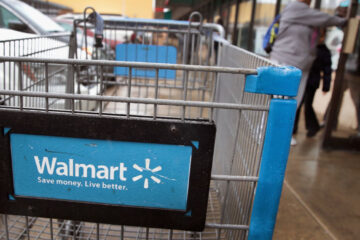No matter who you are in the retail space these days, chances are, you’re not having the greatest of times.
Gone are the days when attracting customers was as easy as planting your store in a high-interest location and keeping your shelves reasonably stocked.
Related: Bankrupt retail chain gets possible billion-dollar rescue lifeline
Back then, primarily in the 1980s and 1990s when shopping malls boomed, the business model was more straightforward.
If you were a retailer that could afford the high rents malls charge for access to more foot traffic, you’d put down stakes in that mall and let the people come to you.
Times tended to be even better if you were a large flagship or anchor located inside that mall.
Mall anchors are large department stores typically located in the corners of malls. Most are strategically located right off a main parking area, so customers are forced to walk through that store to access the rest of the mall.
And many end up shopping through a mall anchor, even if that wasn’t a part of their primary mission.
JCPenney is closing more stores.
Image source: Shutterstock
Mall anchors have had to adapt
Nowadays, though, things are very different.
The number of malls in the U.S. has plummeted from around 2,500 in the 1980s to just 700 today.
And Capital One projects that 87% of all large-scale malls may shutter within the next 10 years.
More closings:
Popular Mexican chain closing all restaurants, no bankruptcyIconic mall chain shuttering more stores foreverMajor gym closing multiple locations after franchisee bankruptcyAfter Chapter 11 bankruptcy, beloved retailer closes all stores
These are hard numbers for large retailers to grapple with.
Even if you’re making record sales at every location that remains open, the sheer loss of the number of stores across the U.S. virtually guarantees a loss of profit.
And it’s been harder for many of these mall giants to adjust to a changing shopping landscape.
They’re much larger and their inventory is decentralized. This means getting everything online quickly and effectively — then shipping it to customers — has been a long, cumbersome process.
Top mall retailer shuttering more stores
And now, JCPenney is closing more stores as it struggles to turn its business around.
JCPenney filed for bankruptcy during the height of Covid in 2020, which shut down physical business and made customers even more reliant on online stores.
Related: Home Depot quietly makes a change that may enrage customers
It is now a part of Catalyst Brands and has closed around 200 stores across the U.S.
In May, it will close seven more stores, which will see big markdowns during liquidation sales.
The seven stores will close by May 25. They are:
San Bruno, CA – The Shops at TanforanDenver, CO – The Shops at NorthfieldPocatello, ID – Pine Ridge MallTopeka, KS – West Ridge MallNewington, NH – Fox Run MallAsheville, NC – Asheville MallCharleston, WV – Charleston Town Center
“JCPenney is midway through a reinvention,” JCPenney CEO Marc Rosen said. “There are some signs of success, but they’re patchy. The challenge is pulling them together to drive growth.”


